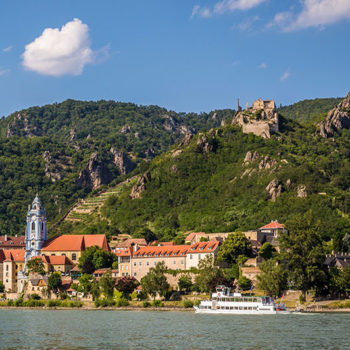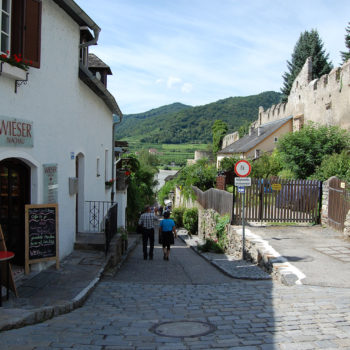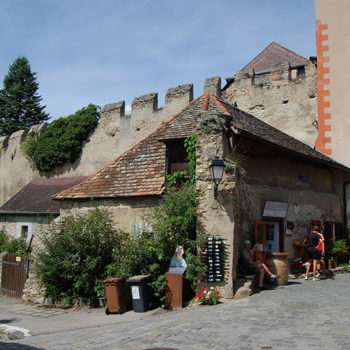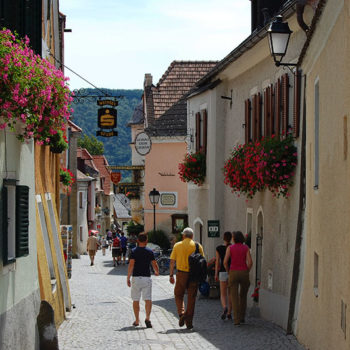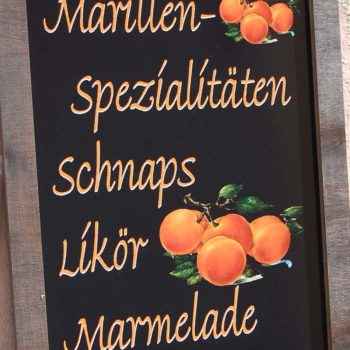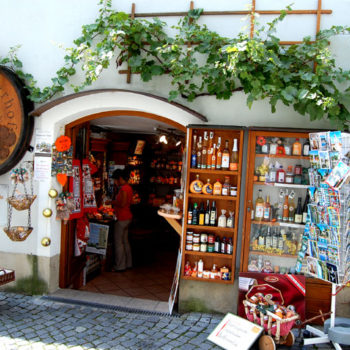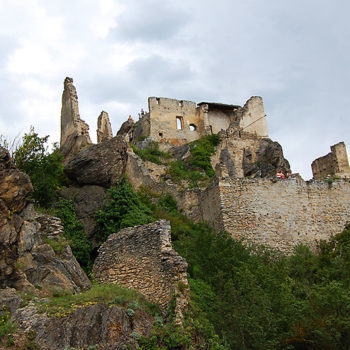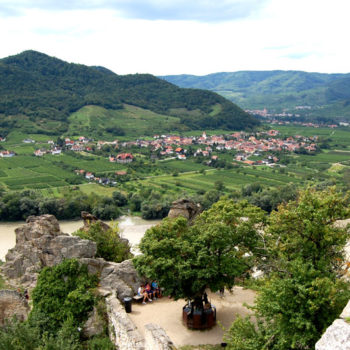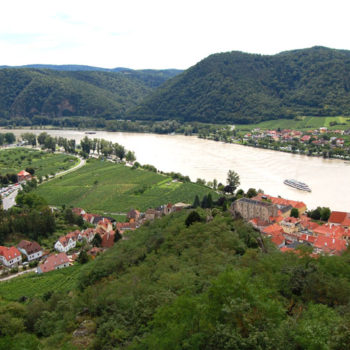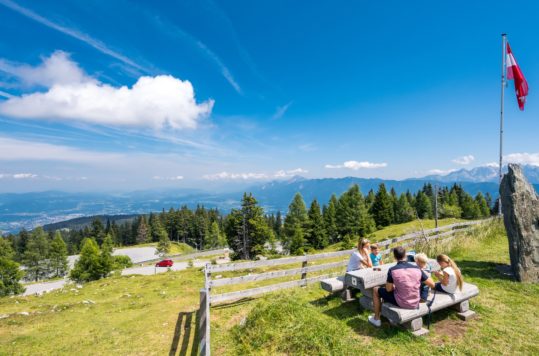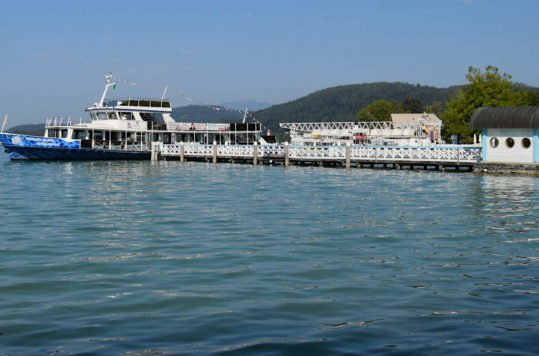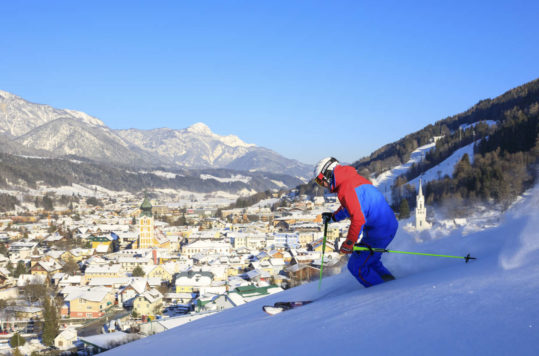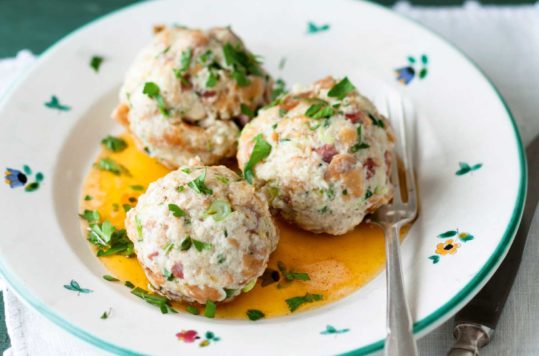You will find several picturesque villages in the Wachau region along the Danube, but one of my favourites is Dürnstein. The tiny town on the banks of the Danube gets its charm from a mix of authentic historic buildings, its river-side location and good old Austrian hospitality.
Dürnstein is taken out of a medieval novel. Dürnstein clings to a narrow strip on the north bank of the Danube in Lower Austria. The small town has taken its name from the castle which occupies the cliffs above. Luckily, the town is much better preserved than the castle, which only consists of a few crumbled walls and towers today. Moreover, Dürnstein, located in the middle of Wachau’s wine and fruit region, is a popular destination for foreign and Austrian tourists. Therefore, this well-preserved medieval small town is absolutely worth visiting for a day or two.
Discovering Dürnstein
Lovely Dürnstein has about 800 inhabitants, most living outside the town walls. Narrow cobbled streets surrounded by historic buildings are hidden behind a fortification wall. As we stroll through the town’s main gate, “Kremser Tor”, it’s almost like leaving this century and moving backwards. Well, if you manage to overlook the cars. From Kremser Tor (gate), the Hauptstrasse (main street) passes through the small town. We just had to make a few stops, as this is where we found most shops. For the best view of the Danube River from the town itself, we headed for the small viewing platform right outside the entrance to Hotel Schloss Dürnstein. Another option is to stroll down to the river bank by turning right outside the eastern city gate (Kremser Tor) and follow the Anzuggasse down towards the river along the wall.
Down by the riverside
A walk along the Danube gives you a different perspective of the lovely historic small town. Moreover, Dürnstein’s characteristic blue-white church tower landmark is best visible from the riverside. It’s part of the Stift Dürnstein monastery. The history of Dürnstein Abbey begins with the consecration of a Marian chapel donated by Elsbeth von Kuenring in 1372. Dürnstein Abbey is a Baroque jewel in which Provost Hieronymus Übelbacher (1710-1740) could translate the spirit and faith of his time into the language of architecture in an outstanding way. Constructed in Gothic and Baroque styles, mainly between 1400 and 1700, the monastery occupies a large chunk of the town. You can visit the monastery alone or do guided tours for a few euros.
< Click on the images to enlarge >
Best in the off-season
At first glance, Dürnstein may seem a little kitsch with all the souvenir shops crowded with tourists on foot or bicycles. Nevertheless, do not be fooled by all the souvenir shops. Look past all this, and you will also notice the history which creates all the buzz. After all, Dürnstein was incorporated into the UNESCO World Heritage Sites in 2000. I have visited Dürnstein during all seasons, and all seasons have had different highlights. During the July and August holidays, the place is packed. In May and June, the number of tourists is far less, and it is easier to enjoy the atmosphere. Most visitors are day-trip tourists. Thus, in the afternoon, it usually quiets down a fair bit. Dürnstein old town, with its 340 inhabitants, is a small place, and you can leisurely explore the tiny village and enjoy a snack or refreshment within just 2-3 hours.
ADVERTISEMENT
Dürnstein castle
Arriving in Dürnstein, you cannot miss the ruins of a medieval castle on the rock outcrop above the town. We hiked up to the castle even though the ruins themselves were not worth visiting. Nonetheless, the effort paid dividends with the combination of amazing views and the lovely path through the vineyards. In another footnote, a Swede contributed to the destruction of the castle when General Torstensson and his army blew up the castle in 1645. After this, nobody cared to rebuild it. Dürnstein, or Castle Dürnstein, also left a historical and political footprint even further back. From December 1192 until March 1193, the English king Richard Lionheart was imprisoned in the castle. Well, that is what the legend says. Either way, when you stand in the castle, you quickly understand why they chose this location. The view of the Danube Valley is simply phenomenal.
Wine & apricot liqueur
We did not fail to notice that Wachau is one of Austria’s premier wine regions. Wherever we looked, we were surrounded by vineyards. Moreover, vines are also used as ornamental plants, and you will also notice them inside the town. Farmers around Dürnstein also cultivate different varieties of fruit, one of the most popular being apricots (Marillen in German). Apricots are sold as fresh fruit but are also made into a liqueur. In Dürnstein and the surrounding farms, you can buy locally produced snaps and liqueurs. Or you can choose mass-produced from larger distilleries in the supermarkets. If you’re unsure what to choose, most shops offer a tasting of their products.
How to get there
By boat: In the summer months (April – September), you can sail to Dürnstein from Krems and Melk and on a day cruise from Vienna that stops in Dürnstein for about 2 hours.
By car: Dürnstein is located on the northern bank of the Danube River, and Route 3 (B3) runs past the small town. There is paid parking outside the town walls.
By train/bus: You can go by train to Krems, where you change to a bus for the last leg. Takes about 2-2.5 hours.

